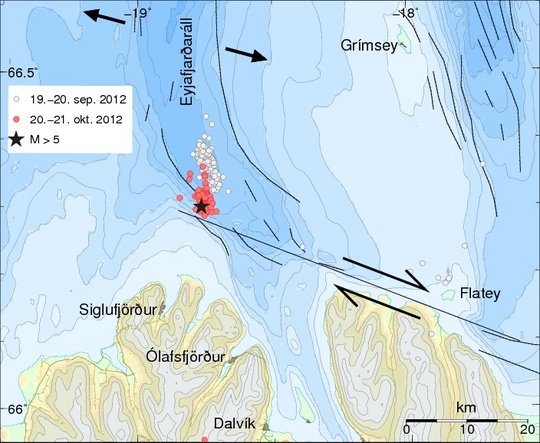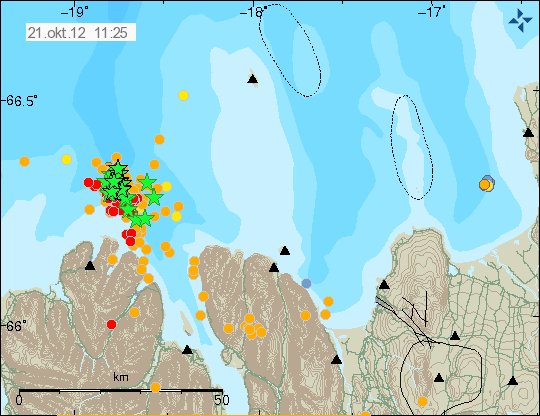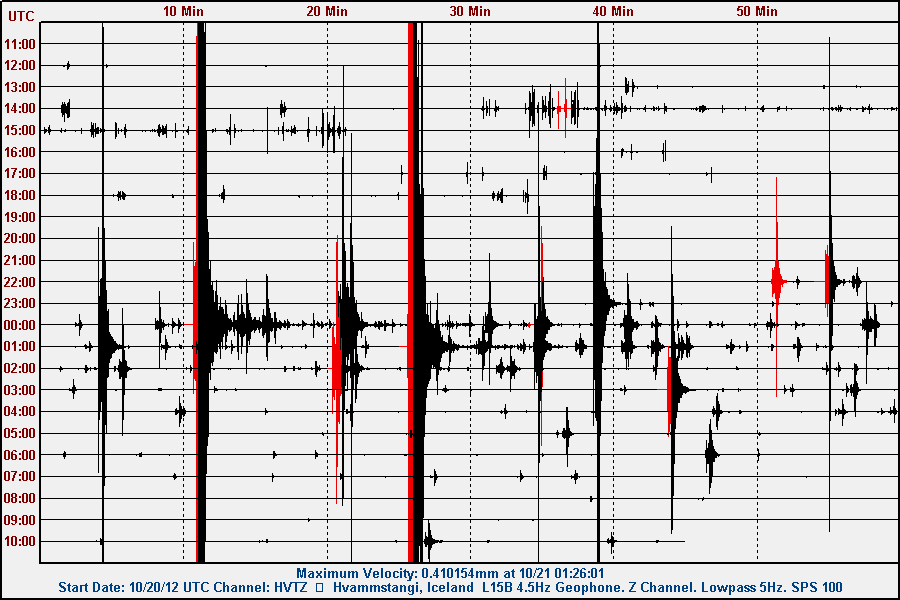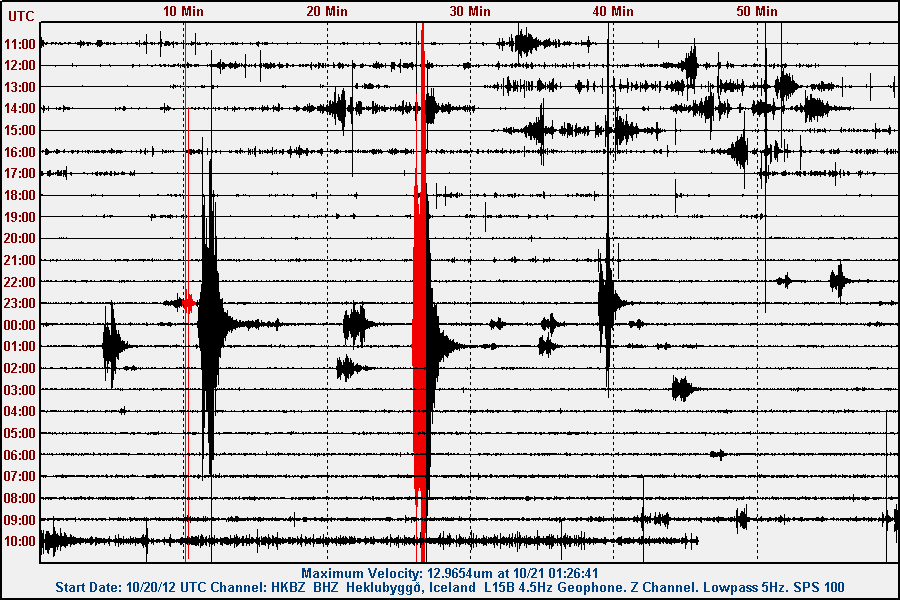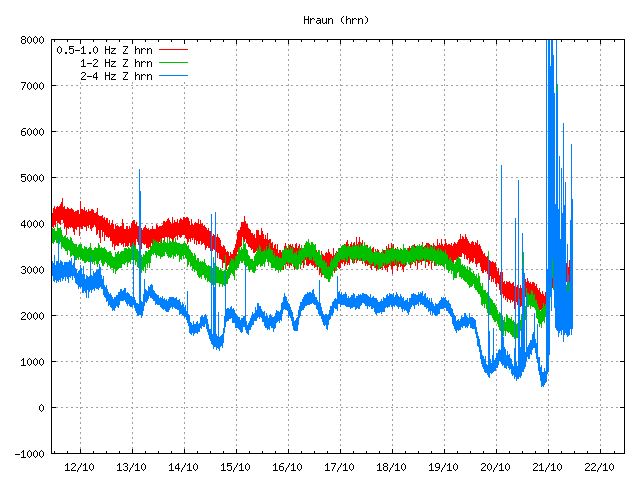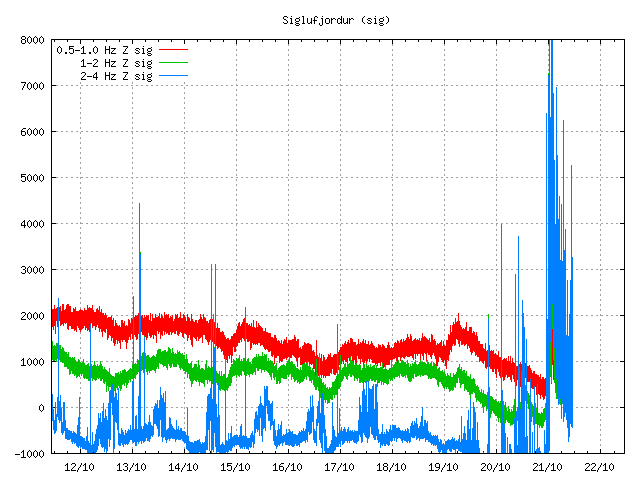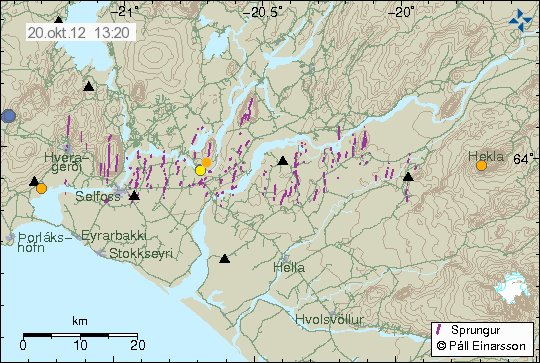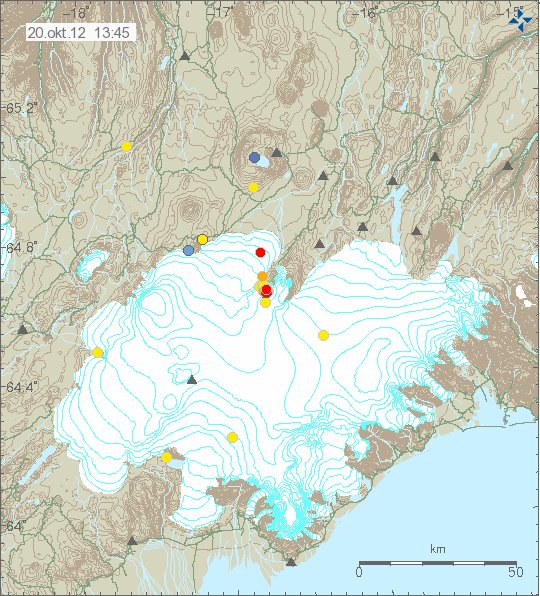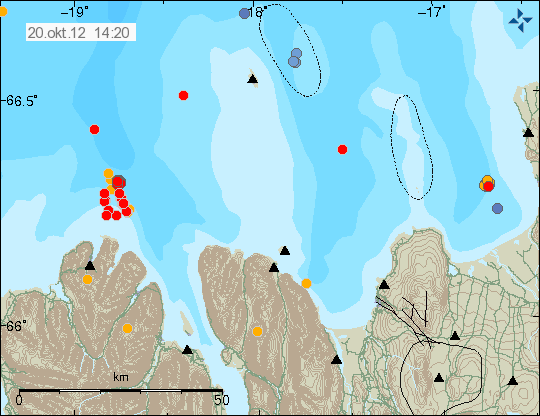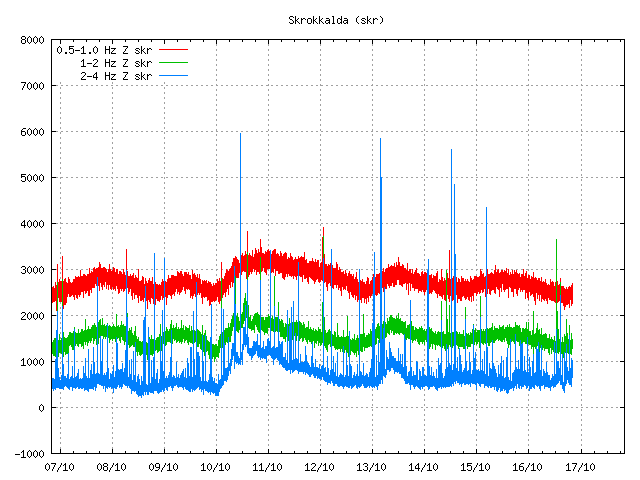Here are the earthquake traces of the magnitude Mw5.6 earthquake that took place in TFZ on 21.10.2012 at 01:24 UTC. I did detect this earthquake in all of my geophone stations in Iceland.
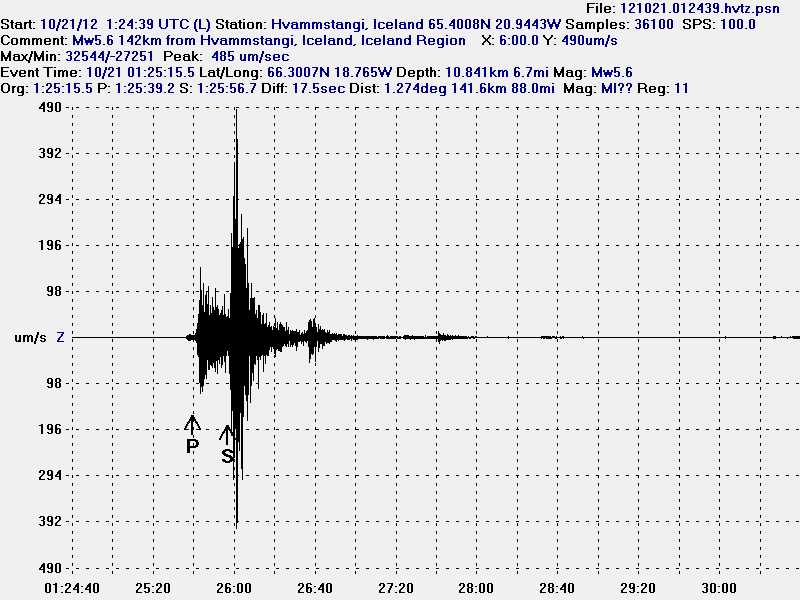
The Mw5.6 earthquake in TFZ. This is the Z trace. This image is released under Creative Commons licence. See licence page for more details.
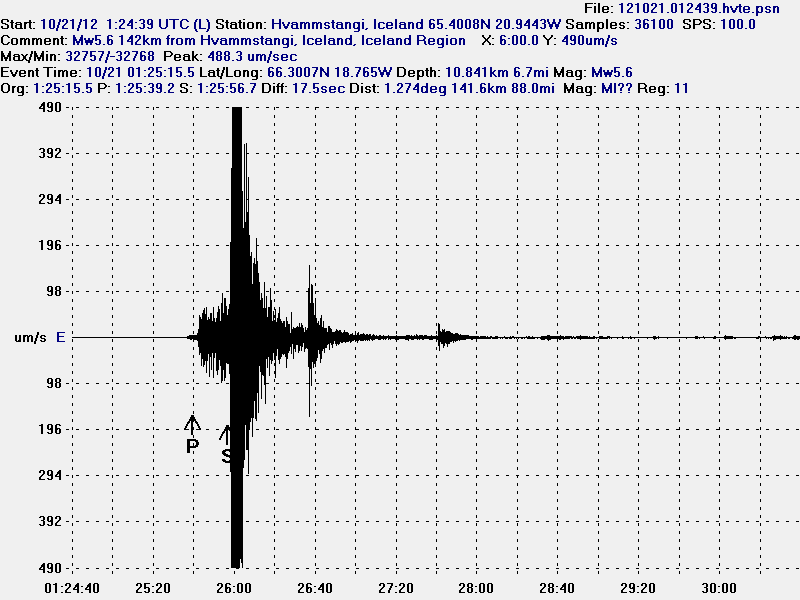
The Mw5.6 earthquake in TFZ. This is the E-W trace. This image is released under Creative Commons licence. See licence page for more details.
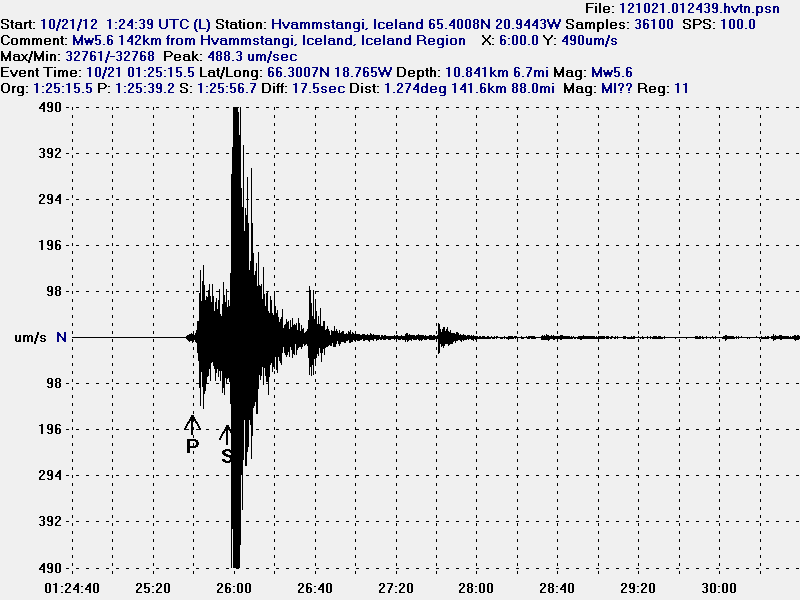
The Mw5.6 earthquake in TFZ. This is the N-S trace. This image is released under Creative Commons licence. See licence page for more details.
The interesting thing about this earthquake is how stronger the N-S,E-W trace is compared to the Z (vertical). This shows that this earthquake movement was strongest on E-W and N-S then vertical (Z).

The Mw5.6 earthquake in TFZ. This is Heklubyggð geophone station. This image is released under Creative Commons licence. See licence page for more details.
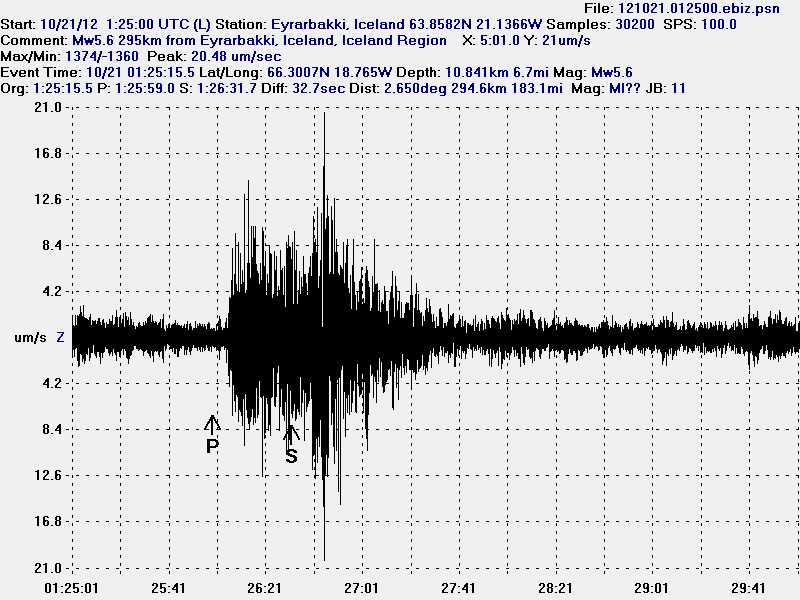
The Mw5.6 earthquake in TFZ. This is Eyrarbakki geophone station. This image is released under Creative Commons licence. See licence page for more details.
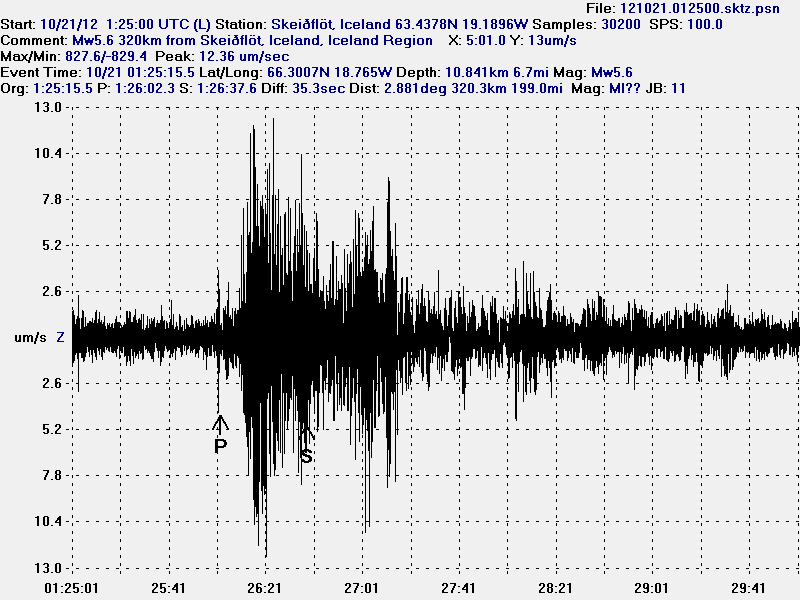
The Mw5.6 earthquake in TFZ. This is Skeiðflöt geohone station. This image is released under Creative Commons licence. See licence page for more details.
Earthquake activity is currently ongoing in TFZ. With earthquakes often reaching magnitude 3.0 in size. But many smaller earthquakes have taken place in the past 10 hours in TFZ. But overall the earthquake activity has slowly been dropping down since the large Mw5.6 took place at 01:24 UTC. If the earthquake activity is going to increase again is impossible to know for sure at current time.

